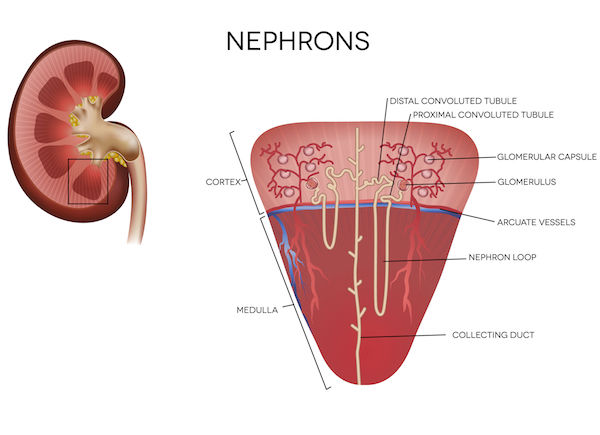SATURDAY, Nov. 7, 2015 (HealthDay News) — The rate of chronic kidney disease among Americans has leveled off over the last decade after climbing for many years, a new study found.
Researchers compared nationwide data for 2003-2004 and 2011-2012. Their study showed that the number of people with chronic kidney disease had stabilized or even decreased over the period. The plateau mirrors that found in U.S. cases of permanent kidney failure, also known as end-stage renal disease.
“High blood pressure and diabetes are two major reasons for developing kidney disease, and I think treatments for these are actually getting better,” said study author Dr. Chi-yuan Hsu, professor and division chief of nephrology at the University of California, San Francisco.
“Kidney disease takes years to decades to develop, and several decades ago, we started developing better ways of halting or slowing kidney disease,” Hsu added. “Control is much better than it used to be.”
The study was to be presented Saturday at the American Society of Nephrology’s annual meeting, in San Diego. Research presented at scientific meetings typically hasn’t been peer-reviewed or published and the results are considered preliminary.
Chronic kidney disease, which causes reduced kidney function over time, remains a major public health problem. It affects more than 20 million Americans and is the ninth-leading cause of death in the United States, according to the U.S. National Institute of Diabetes and Digestive and Kidney Diseases.
Because of the threat, the U.S. Department of Health and Human Services’ Healthy People 2020 initiative has aimed for a 10 percent reduction in chronic kidney disease cases in the United States over the next five years.
Many chronic kidney disease patients eventually develop end-stage renal disease, which requires treatment with dialysis or a kidney transplant. Hsu’s study is consistent with prior research indicating that new diagnoses of end-stage renal disease have also leveled off.
He said better blood sugar control for people with diabetes and drugs that help patients better manage high blood pressure have contributed to the gains.
“Every few years, there’s some new class of drugs available for diabetes,” Hsu said. “The whole area of blood pressure treatment has [also] made a lot of progress.”
Dr. Uptal Patel, an associate professor of nephrology and pediatric nephrology at Duke University School of Medicine in Durham, N.C., agreed with Hsu on the reasons why kidney disease rates have stabilized.
“It’s actually very exciting, promising data from a public health perspective,” Patel said. “And, this result [also] suggests potentially more widespread effectiveness in public health strategies” that have raised awareness of kidney disease.
Aside from diabetes and high blood pressure, several other health conditions can put people at risk for kidney disease, Patel noted. These include autoimmune diseases such as lupus or scleroderma, advanced heart disease, or a history of cancer. A family history of kidney disease should also be considered.
Symptoms of chronic kidney disease range from nausea and vomiting to lower urine output and swelling of the ankles and feet. But many symptoms are non-specific, meaning they could be caused by a variety of health problems.
Being overweight can also raise the risk, because it increases the odds for high blood pressure and diabetes, Hsu and Patel said.
“We do need to combat obesity, because that’s the origin of a lot of problems,” Hsu said. “But it’s encouraging … that obesity is no longer increasing [nationally] at the rate it was.”
More information
Learn more about chronic kidney disease at the National Kidney Foundation.
Copyright © 2025 HealthDay. All rights reserved.

